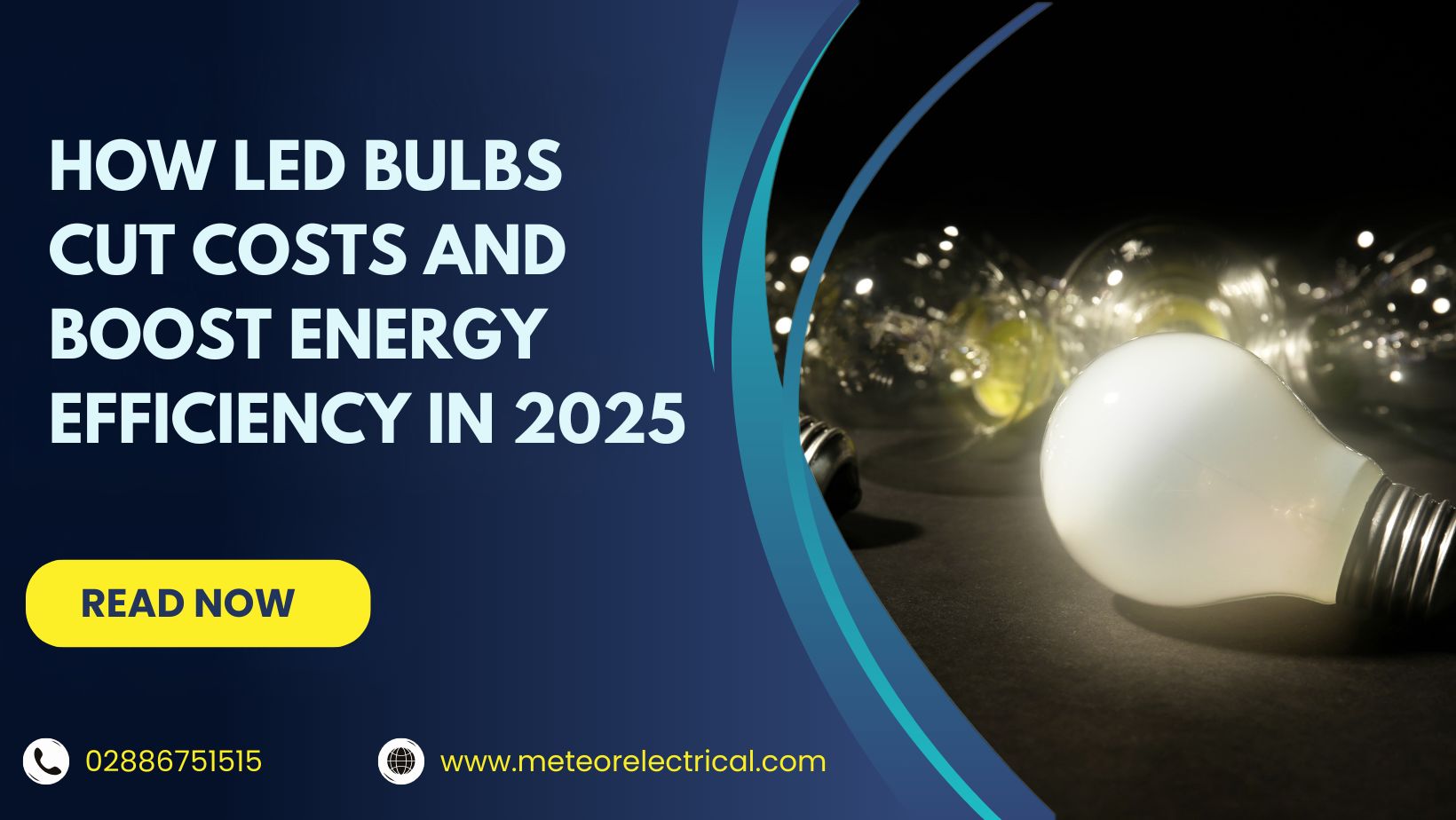LED Bulbs 101 : Electricity Cost, Savings, and More.

LED lighting is no longer a futuristic upgrade—it is now a household standard. Over the past decade, LED bulbs have replaced traditional incandescent and halogen bulbs in homes across the UK. Why? Because they are brighter, longer-lasting, and far more energy-efficient.
In 2025, with electricity prices averaging 30.4p per kWh, homeowners are under increasing pressure to make smart energy decisions. LED bulbs are a small change with big impact—both for your bills and for the environment.
Recent reports from Energy Saving Trust and Ofgem confirm that households can reduce lighting energy usage by up to 85% by switching to LEDs. If you are still using outdated lighting, it might be time to screw in some savings.
Understanding Home Lighting Electricity Use
Lighting accounts for roughly 10-15% of a typical UK home's electricity bill. However, the shift to energy-saving bulbs like LEDs has significantly reduced this share over time.
- Traditional incandescent bulbs: ~700 kWh/year
- CFLs (Compact Fluorescent Lamps): ~500 kWh/year
- LED bulbs: as low as 300 kWh/year
Not only do LEDs consume less energy, but they also last up to 15–25 years with average use. Unlike CFLs, they switch on instantly and do not require warming up, making them ideal for all rooms in the house.
Credit: The Hook Up
How Much Do LEDs Cost in 2025?
LED bulb prices have dropped dramatically. In 2025, you can expect to pay:
- Standard LED bulb: £2 – £5
- High-output GU10 spotlight: £10 – £15
- Smart Wi-Fi enabled LED: £15 – £25
While upfront costs may still vary, the payback period is often under a year, especially for frequently used lights like those in kitchens and hallways.
Government-backed energy initiatives, such as bulk purchasing programs, may further reduce costs. These schemes allow suppliers like Meteor Electrical to offer affordable LED lighting solutions without sacrificing quality.
The Real Savings: Money and Carbon

Let’s crunch the numbers.
Say you replace 10 halogen bulbs with LEDs. Each bulb runs about 2 hours per day, a modest estimate for high-traffic areas. Here is what that looks like annually:
- Energy saved: ~150 kWh/year
- Money saved: ~£45/year (based on 30.4p/kWh)
- Lifespan savings: Up to £300–£500 per household over 10 years
- Carbon savings: Up to 2.3 million tonnes/year nationally
These savings are even greater for homes on off-peak tariffs like Economy 7. The upfront switch might cost you £50–£100 depending on the bulb type, but you will see returns within the first year.
Easy to Upgrade, Easy to Love
One of the biggest advantages of switching to LEDs? It is hassle-free. Unlike upgrading appliances or changing your boiler, LED installation is DIY-friendly:
- No tools required
- Compatible with most fittings
- Available in warm white, cool white, and smart color-changing variants
Plus, modern LED designs now mimic traditional bulbs in style—so you do not have to compromise aesthetics for efficiency.
Choosing the Right LED Bulbs

When shopping for LEDs, consider:
- Lumens not watts: More lumens = brighter light
- Color temperature: 2700K (warm) to 5000K (cool)
- Dimmability: Not all LEDs work with dimmer switches
- Smart features: Look for app control, timers, and voice assistant compatibility
Meteor Electrical offers a wide range of LED bulb options from trusted brands, ensuring both performance and value.
| Feature | LED Bulbs | Halogen Bulbs | CFL Bulbs |
|---|---|---|---|
| Average Cost (per bulb) | £2 – £5 | £1 – £2 | £1.50 – £3 |
| Wattage for 800 lumens | 8–10W | 42–50W | 13–15W |
| Average Lifespan | 15,000 – 25,000 hrs | 1,000 – 2,000 hrs | 8,000 – 10,000 hrs |
| Annual Energy Use | ~30–40 kWh | ~160 kWh | ~80 kWh |
| Yearly Cost (@30.4p/kWh) | £12 | £48 | £24 |
| Dimmable? | ✔ (if labeled) | ✔ | ✘ (most models) |
| Warm-up Time | Instant On | Instant On | 10–60 seconds |
| Eco-Friendly | Yes (no mercury) | No | Contains mercury |
Conclusion
In 2025, switching to LED bulbs is one of the easiest and most cost-effective ways to reduce your electricity bill and your carbon footprint. With energy prices continuing to rise, every kilowatt-hour saved counts. Whether you are lighting a cozy bedroom or a busy kitchen, LEDs offer instant, lasting savings.
Meteor Electrical makes it even easier by offering a curated selection of top-rated energy-saving LED lights to suit every room, budget, and style. Ready to make the switch?
Explore our LED bulb collection now → Meteor Electrical LED Range
FAQs
1. Are LED bulbs really cheaper in the long run?
Yes. Although LED bulbs may cost more upfront, they use up to 85% less electricity and last 10–25 times longer than incandescent bulbs—saving you money over time.
2. How much can I save by switching to LED lighting?
On average, a household can save £45–£60 per year by replacing 10 halogen bulbs with LEDs, depending on usage and electricity rates.
3. Do LED bulbs work with dimmer switches?
Not all LED bulbs are dimmable. Make sure to check the packaging or product description and use compatible dimmer switches designed for LED lighting.
4. What is the difference between lumens and watts in LED bulbs?
Watts measure energy consumption, while lumens measure brightness. Always choose LED bulbs based on lumens to get the desired level of light.
5. Can I use LED bulbs in all fixtures?
Yes, most LED bulbs are compatible with standard fittings (like B22, E27, or GU10). Just make sure to match the base type and check for enclosed fixture compatibility if needed.

